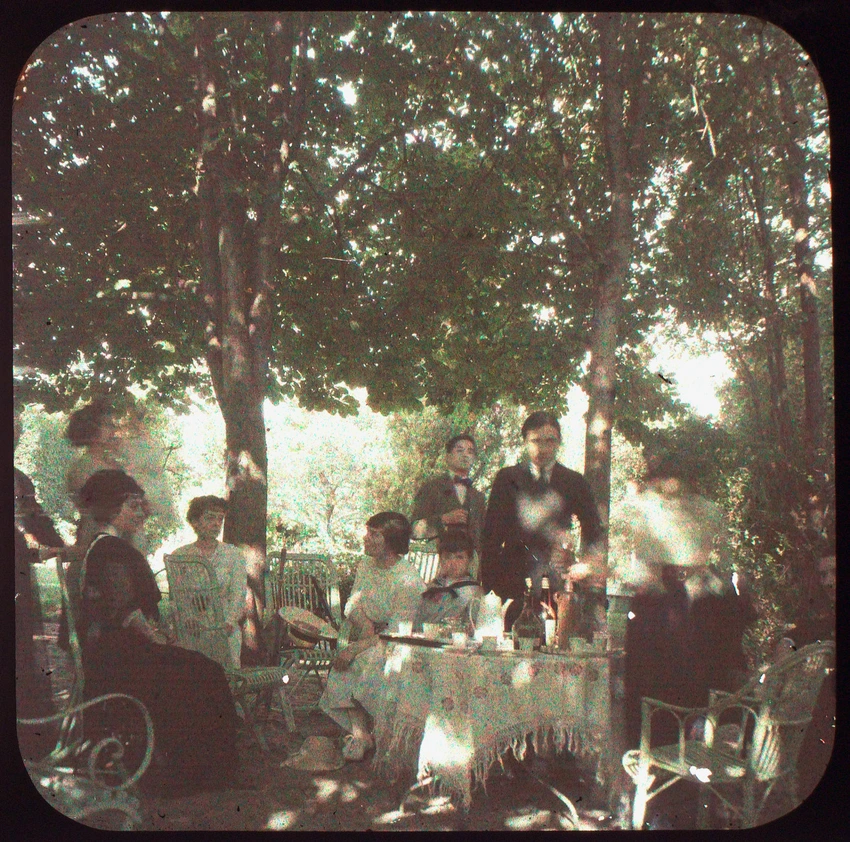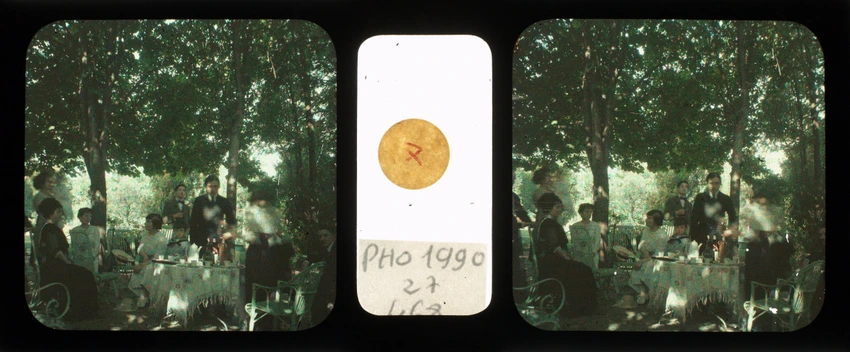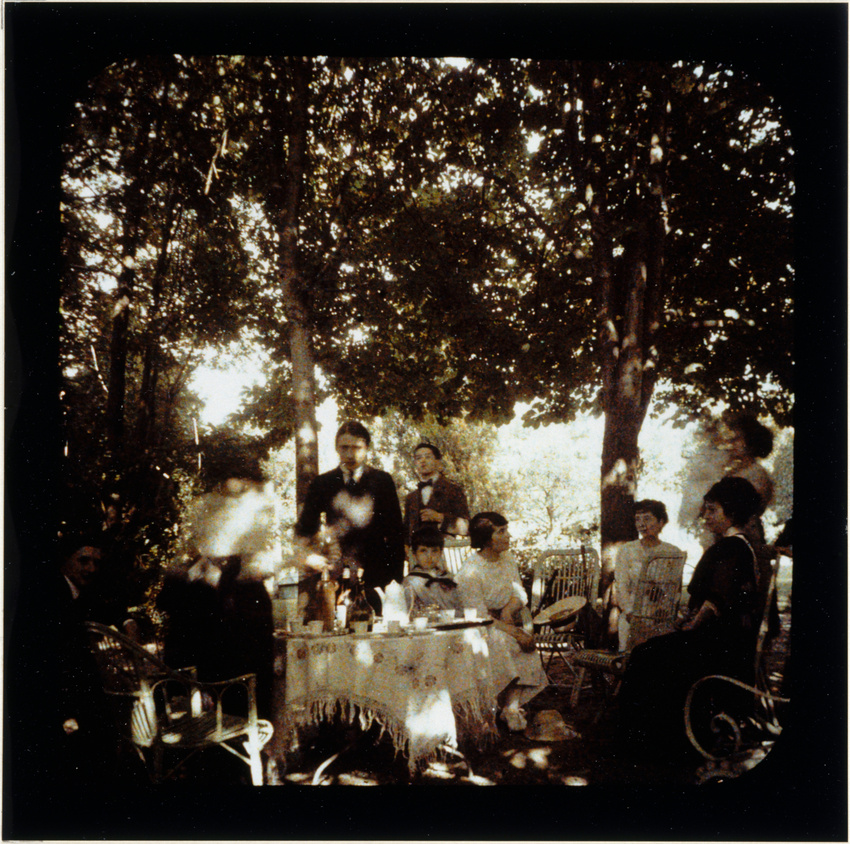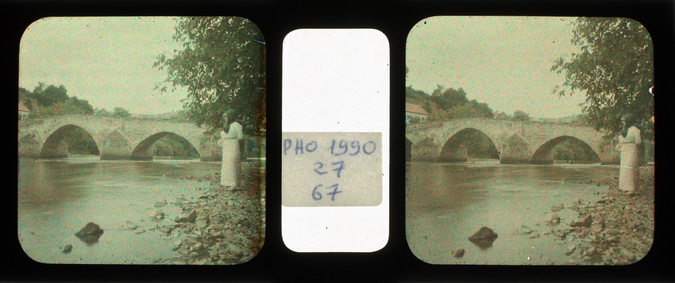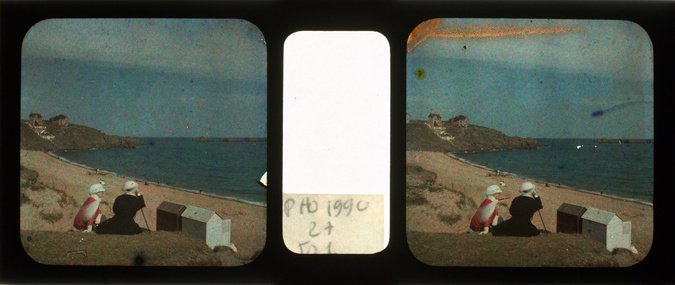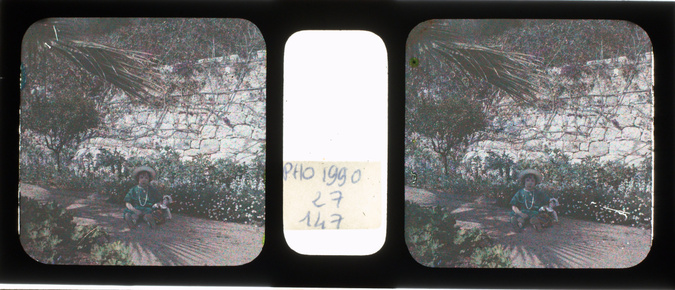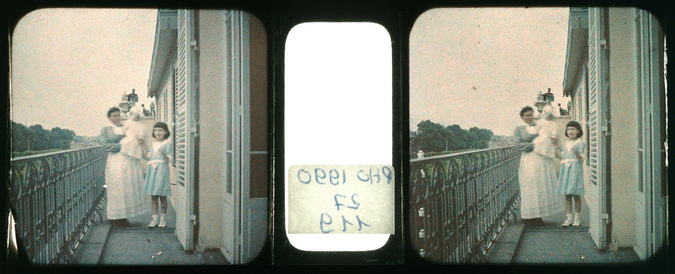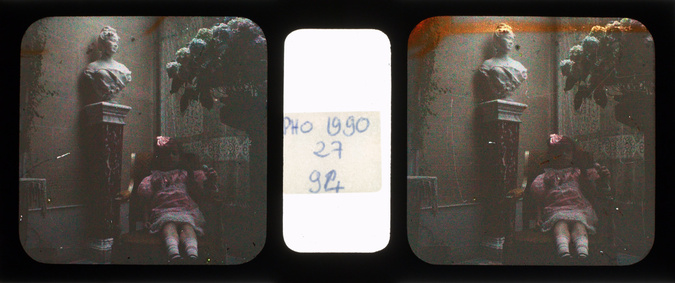Famille prenant le thé au jardin
A leading political figure who occupied a variety of ministerial posts between 1905 and 1931, Etienne Clémentel was a great lover of the arts, and of Impressionist painting in particular. A painter himself, he also practised amateur photography for over twenty years. His images clearly indicate his fondness for Impressionism. The light filtering through the foliage of the trees at the end of a meal at the Clémentel family estate in Combronde (Puy-de-Dôme) is reminiscent of Renoir's Bal du moulin de Galette. The blurred image and seemingly haphazard composition also evoke Bonnard, his photographs taken at his Grand Lemps estate and his paintings of Vernon.
Clémentel's originality in his photography comes, above all, from his choosing the stereoscopic autochrome. This technique combines the autochrome, the Lumière brothers' colour process, developed in 1907, and the use of three-dimensional photography, very much in fashion during the Second Empire. The use of a Richard verascope, a portable camera taking two shots simultaneously at slightly different angles, produced negatives which when viewed through a binocular gave a three dimensional impression.
Over and above these features, this group portrait, in both its subject and its treatment, is quite representative of the work of wealthy amateur photographers who, at the turn of the century, frequently depicted family scenes.
